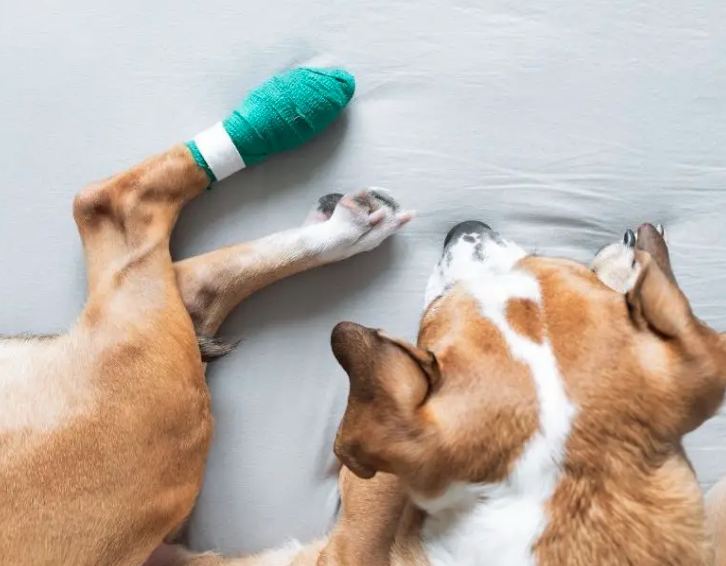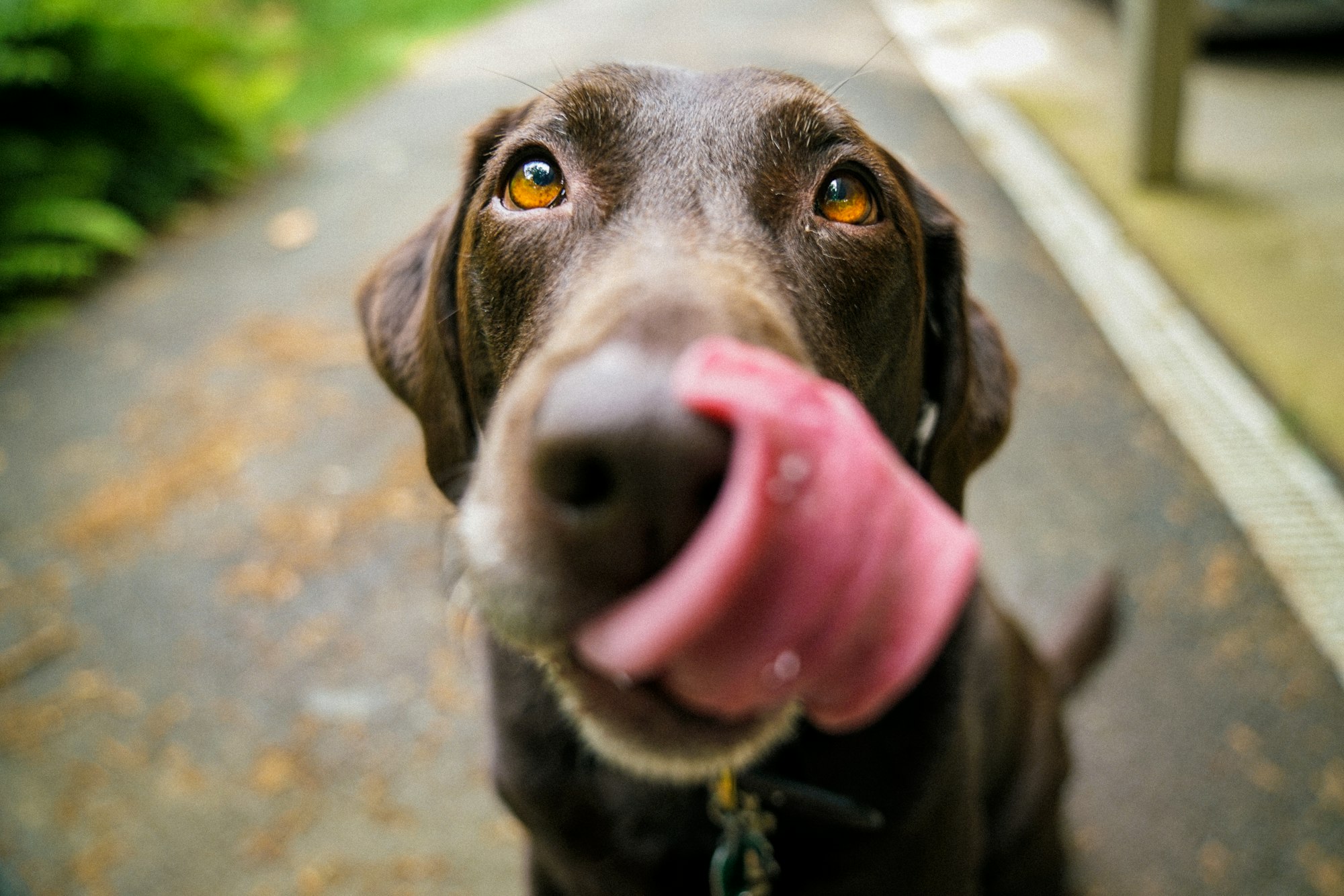Dog owners understand that their four-legged friend can sometimes get pretty serious scrapes. It doesn't matter how careful you are, this is inevitable, and at some point, you will deal with a wound. Therefore, dog wound care is vital to maintain. It's simple; however, it does require a little knowledge and preparation.
As canines can't speak for themselves, they rely on their owner's ability to interpret their body language and behavior in determining whether or not they're in pain. Suppose your canine seems uncomfortable; they may hold back from showing you how much they hurt until they can't take it anymore.
But don't worry. This article covers the basics of dog wound care and types of wounds and gives you some tips on how to best treat your pet's wounds.
Dog Wound Care at Home: Can You Clean It Yourself or Need a Vet?
Taking care of a dog wound at home is possible, but it's vital to follow the proper steps to ensure the wound is properly treated. However, suppose the wound is deep or severe, you should seek veterinary care. Also, if you are unsure, please take your dog to the vet for proper care.
#Step 1: Clip the hair around the wound to ensure it is clean (free of debris). Then, gently clean the wound with a warm, wet washcloth.
#Step 2: After cleaning the wound, apply a thin layer of triple antibiotic ointment. Suppose the injury is on the paw; consider soaking the foot in a large bowl or baking dish, for 3-5 minutes. Dry the wound after it has soaked.
#Step 3: Once the wound is clean and dry, use a diluted solution of Betadine (Povidone Iodine) or Nolvasan (Chlorhexidine) in warm water as a final rinse or soak. Ensure the dog doesn't lick or chew the open wound.
Consider getting some prescribed antibiotics or suitable antibiotic cream from your vet to be applied to the wound. Ensure you don't discontinue antibiotics unless specifically instructed to do so by your veterinarian.

Types of Dog Wounds
Dog wounds are caused by various factors, ranging from accidents to fights with other dogs. They include the following:
1. Burns
Burns are the most common type of dog wound. They occur from hot pavement, chemicals, cooking surfaces, and other sources.
They range from minor to major, depending on their severity. Some burns require immediate treatment by a vet, while others are best treated at home. The key is knowing what kind of burn your dog has; so you can treat it properly.
2. Scrapes
These are small cuts, usually shallow, and sometimes not very painful. Scrapes occur when your dog falls or runs into something sharp, such as a bone or stick.
These scrapes aren't normally serious; however, they can become infected if not treated.
3. Lacerations
Lacerations are deeper than scrapes and often require stitches or surgical repair to heal properly. These wounds may result from another dog or from being struck by a car or some other type of large object. This might cause significant damage to your pet's skin and the tissue layers beneath it.
4. Puncture Wounds
Puncture wounds are caused by bites or attacks from other animals or humans. These wounds can be deep, cause internal damage, or lead to death.
Puncture wounds from bites often have puncture marks on either side of the skin, while those from barbed wire fences or sticks look like cat scratches. They have jagged edges that could damage underlying tissue when pulled out.
5. Hot Spots
Hot spots are inflamed, oozing sores appearing anywhere on your dog's body. They often appear as a patch of redness or swelling on the skin. However, this can quickly become an open sore that is painful and difficult for you to treat.
Hot spots usually result from irritations caused by fleas, allergies, or contact with irritants such as chemicals or plants.
6. Eye Wounds
Eye injuries are painful and disfiguring, although they are rarely life-threatening unless they involve the cornea.
Injuries to the cornea can interfere with vision. Other eye injuries include detachment of the retina (a thin layer at the back of the eye) or rupture of the eyeball. These injuries require immediate veterinary attention.
6. Insect Bites
Insect bites cause irritation and swelling. In some cases, they can be extremely painful and even lead to an allergic reaction requiring medical treatment.
Insect bites are hard to avoid because they're so common in warm months. However, most insect bites don't cause serious medical problems. Suppose you notice symptoms such as fever or infection (if the dog is not prone to them), then you should seek medical care.
Can You Use Hydrogen Peroxide on Dogs?
Hydrogen peroxide is safe for dogs when used in small amounts or diluted with water. You can apply it on the wounds like:
- The ears
- Eyes
- Teeth
- Paws
- Skin
- Mouth
However, it can be harmful if ingested or applied undiluted. Its vapors pose the biggest risk of harm due to irritations to the lungs, throats, or eyes. Also, when using this product, make sure the dog doesn't lick his fur or ingest any residue.
What Can Help You in Dog Wound Care?
When caring for your canine, what can you put in a dog wound? Some of the most commonly used ingredients include the following:
1. Water
Water is one of the best ways to clean a dog's wound. Ensure the water is warm (not too hot) to avoid burning your pet's skin. Water helps clean away dirt, debris, and blood from the wound. It also aids in flushing out any toxins that may be present in the wound.
2. Saline or Salt Solution
It is also a simple method of dog wound care. The saline solution is salt water that contains no added dyes or fragrances.
This solution is bought at any pharmacy in either powdered or liquid form (it can also be made at home). Then, dilute the saline solution with water before using it. The time taken to soak your pet's wounds depends on the severity of their injuries. However, it is best to check with your veterinarian before doing in case specific instructions.
3. Turmeric
Turmeric contains curcumin. This is a natural antibiotic and anti-inflammatory.
It is used on cuts, burns, and other wounds. Turmeric also aids in healing skin rashes and reducing itching.
4. Iodine
Iodine is an antiseptic that kills bacteria and viruses, causing infections. It also controls the infection from spreading by destroying the tissue around the wound.

What to Do When Your Dog Has a Bleeding Wound
Suppose your dog is bleeding; stop the wound immediately. Make a straight-forward pressure to the injury using an absorbent dressing, like dry gauze. Then, put a layer of bandage or a clean, dry cloth.
Once the bleeding stops, clean the wound with a non-stinging antiseptic diluted in warm water. Next, wipe the wound with a clean cloth or towel, avoiding cotton as the threads tend to stick to the wound.
When Should You Take Your Puppy to the Vet
Taking a dog to a vet means it is beyond your care. Or symptoms you can't explain. Thus, before doing it, consider the following circumstances when:
- Experiencing difficulty in breathing or choking
- Seizures or convulsions
- There is severe bleeding
- The loss of consciousness or sudden collapse
- Having severe vomiting or diarrhea
- Uncontrolled pain or crying out when touched
- Trauma like being hit by a car or falling from a height
- Having dislocated joints
- Inability to urinate or defecate
DIY Supplies for at-Home Wound Care
To monitor your dog without veterinary intervention, you can provide at-home wound care basic supplies such as:
- Clean towels or clothes.
- Saline solution.
- Hydrogen peroxide. To clean the wound and help prevent infection.
- Antibacterial ointment.
- Non-stick bandages. These can be used to cover the wound and protect it from further injury.
- Elizabethan collar. Prevent the dog from licking the wound.
Recap
Dog wound care is a subject most dog owners don't like to deal with. However, the sad truth is it is a topic that any good dog owner should take the time to learn, from wound types to remedies, as mentioned above.






